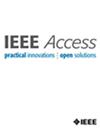Explainable Graph Neural Networks for Power Grid Fault Detection
IF 3.6
3区 计算机科学
Q2 COMPUTER SCIENCE, INFORMATION SYSTEMS
引用次数: 0
Abstract
This paper proposes the application of explanation methods to enhance the interpretability of graph neural network (GNN) models in fault location for power grids. GNN models have exhibited remarkable precision in utilizing phasor data from various locations around the grid and integrating the system’s topology, an advantage rarely harnessed by alternative machine learning techniques. This capability makes GNNs highly effective in identifying fault occurrences in power grids. Despite their greater performance, these models can encounter criticism for their “black box” nature, which conceals the reasoning behind their predictions. Lack of transparency significantly hinders power utility operations, as interpretability is crucial to building trust, accountability, and actionable insights. This research presents a comprehensive framework that systematically evaluates state-of-the-art explanation strategies, representing the first use of such a framework for Graph Neural Network models for defect location detection. By assessing the strengths and weaknesses of different explanatory methods, it identifies and recommends the most effective strategies for clarifying the decision-making processes of GNN models. These recommendations aim to improve the transparency of fault predictions, allowing utility providers to better understand and trust the models’ output. The proposed framework not only enhances the practical usability of GNN-based systems but also contributes to advancing their adoption in critical power grid applications.用于电网故障检测的可解释图神经网络
本文提出应用解释方法提高图神经网络(GNN)模型在电网故障定位中的可解释性。GNN模型在利用来自网格周围不同位置的相量数据和集成系统拓扑方面表现出了非凡的精度,这是替代机器学习技术很少利用的优势。这种能力使gnn在识别电网故障发生方面非常有效。尽管这些模型的表现更好,但它们的“黑箱”性质可能会受到批评,因为它们隐藏了预测背后的推理。缺乏透明度严重阻碍了电力公司的运营,因为可解释性对于建立信任、问责制和可操作的见解至关重要。本研究提出了一个全面的框架,系统地评估了最先进的解释策略,代表了第一次将这种框架用于缺陷定位检测的图神经网络模型。通过评估不同解释方法的优缺点,确定并建议了澄清GNN模型决策过程的最有效策略。这些建议旨在提高故障预测的透明度,使公用事业供应商能够更好地理解和信任模型的输出。所提出的框架不仅提高了基于gnn的系统的实际可用性,而且有助于推进其在关键电网应用中的采用。
本文章由计算机程序翻译,如有差异,请以英文原文为准。
求助全文
约1分钟内获得全文
求助全文
来源期刊

IEEE Access
COMPUTER SCIENCE, INFORMATION SYSTEMSENGIN-ENGINEERING, ELECTRICAL & ELECTRONIC
CiteScore
9.80
自引率
7.70%
发文量
6673
审稿时长
6 weeks
期刊介绍:
IEEE Access® is a multidisciplinary, open access (OA), applications-oriented, all-electronic archival journal that continuously presents the results of original research or development across all of IEEE''s fields of interest.
IEEE Access will publish articles that are of high interest to readers, original, technically correct, and clearly presented. Supported by author publication charges (APC), its hallmarks are a rapid peer review and publication process with open access to all readers. Unlike IEEE''s traditional Transactions or Journals, reviews are "binary", in that reviewers will either Accept or Reject an article in the form it is submitted in order to achieve rapid turnaround. Especially encouraged are submissions on:
Multidisciplinary topics, or applications-oriented articles and negative results that do not fit within the scope of IEEE''s traditional journals.
Practical articles discussing new experiments or measurement techniques, interesting solutions to engineering.
Development of new or improved fabrication or manufacturing techniques.
Reviews or survey articles of new or evolving fields oriented to assist others in understanding the new area.
 求助内容:
求助内容: 应助结果提醒方式:
应助结果提醒方式:


